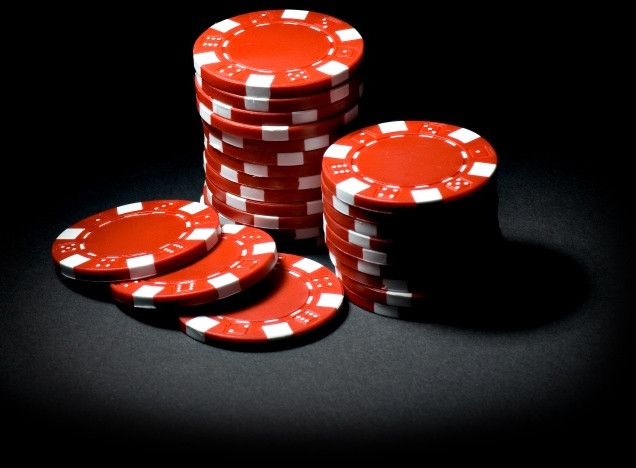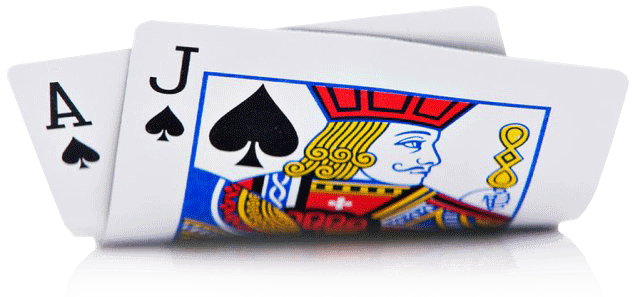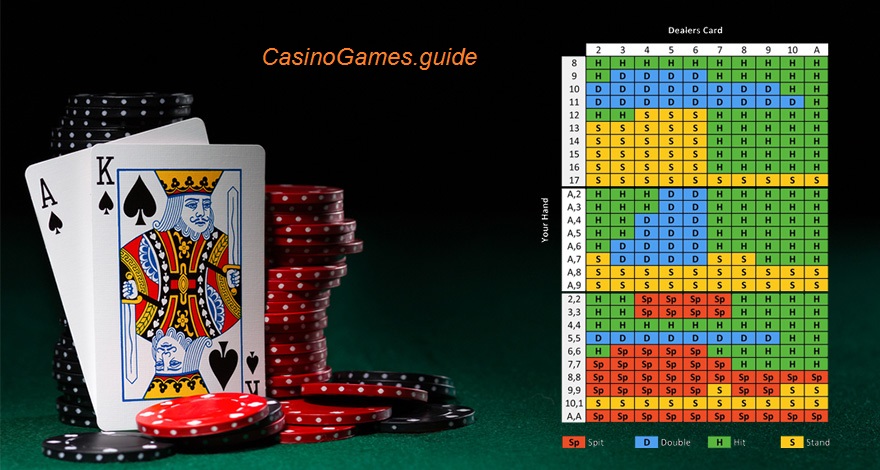- The Reviews
- UNIBET Review 2025
- MANSION Review 2025
- BETSAFE Review 2025
- BWIN Review 2025
- BETSSON Review 2025
- JETBULL Review 2025
- WILLIAM HILL Review 2025
- BET-AT-HOME Review 2025
- ZET Casino Review 2025
- CASINO.com Review 2025
- Mr GREEN Review 2025
- 888 Review 2025
- VEGAS CASINO ONLINE Review 2025
- LAS-VEGAS USA Casino Review 2025
- SUN PALACE Casino Review 2025
- ROYAL ACE Casino Review 2025
- PLANET 7 Casino Review 2025
- CLUB WORLD Casino Review 2025
- SILVER OAK Casino Review 2025
- Free Casino Games
US
- Best Online Casino Games Guide
- Choose Your Best Online Casino
- The Best Casino Games
- Online Card Games
- Best Online Machine Games
- Table Games
- Online Slots
- Complete Modern Online Blackjack Guide
- Free Blackjack Basic Strategy
- Simplified Blackjack Playing Strategy
- How to Play Blackjack Online Like Pros
- Advanced Blackjack Rules and Strategy
- Step-by-Step Blackjack Playing Procedures
- Blackjack Playing Options Guide
- Master Blackjack Card Counting
- Modern Blackjack Card Counters Challenge
- Which is the Best Blackjack Betting System?
- Nine-Count Blackjack Strategy Review
- Blackjack Myths and Errors
- Online Roulette
- Sportsbook
- Online Poker
- Online Video Poker
- Online Scratch Cards
- Online Bingo
- Online Baccarat
- Online Craps
- Asian Casino Games
- Online Keno
- Online Sic Bo
- Casino Bonuses
- Online Casino Reviews
- UNIBET Review, Casino, Sportsbook, Poker & Live Dealers
- BETSAFE Review, Casino, Poker, Live Dealers & Sportsbook
- MANSION Review, Casino, Sportsbook & Live Dealers
- BWIN Review, Sportsbook, Casino, Poker & Live Dealers
- BETSSON Review, Sportsbook, Casino, Live Dealers, Poker
- JETBULL Review -Casino, Sportsbook, Live Dealers
- BET_AT_HOME Review, Sportsbook, Casino, Poker, Live Dealers
- WILLIAM HILL Review -Casino, Sportsbook, Live Dealers, Poker
- ZET Casino Review
- Mr GREEN Review -Casino, Sportsbook & Live Dealers
- CASINO.com Review -Online Casino & Live Dealers
- Las-Vegas USA Casino Review
- Sun Palace Casino Review
- Royal Ace Casino Review
- Planet 7 Casino Review
- Club World Casino Review
- Vegas Casino Online Review
- Silver Oak Casino Review
- Free Casino Games
Put Some Free Basic Strategy in Your Blackjack Game
- Blackjack basic strategy involves understanding odds to turn the house edge in your favor.
- Blackjack has different gameplay options that can improve a player’s basic strategy.
Blackjack is a highly loved Game in large part for being one (if not the) most strategy-oriented Casino Games in existence. Instead of trusting to fate, a good player can carefully form his own personalized Blackjack strategy that will turn the house edge into your advantage.
- Bonus Amount: $3,000 up to $10,000. The best daily bonuses on the internet.
- Games: An incredible number of slots, table games, and video pokers, including HTML5 games.
- Strong security protocols of 128-bit encryption
- Audited and guaranteed fair by TST
- Website: https://www.lasvegasusa.eu/casino/
- Established: 1999
- Software: Real Time Gaming (RTG)
- US and Canadians players supported
- Platforms Supported: Windows, Mac, iPhone, iPad, & Android.
- Type of Casino: Online & Instant or download.
- Free Slots Games: Yes
- Customer Support: 24/7 live chat support, as well as a toll-free phone number: +506-283-0061, and e-mail support
Write your review of Las-Vegas USA Casino
- Website: http://www.royalacecasino.eu
- Casino Type: download client, instant play, and mobile
- Software: Real Time Gaming (RTG)
- Owner: Emoney Processing Casinos LTD
- Established: 2009
- Casino Promotion: 100% Match Deposit Bonus up to $4,000, Daily and Weekly Bonuses
- Coupon Code: CASINO400
- Currencies: US$, Euros, Yen, Pounds, Bitcoin
- Mobile: both desktop and mobile compatibility
- VIP Program: 5 levels Available
- Support: World Class Support, 24/7 live chat & Toll-free phone number for USA and Canada
- Security: 128-bit SSL encryption
- Certified by: CDS (Central Disputes System)
- Languages: English
- License: Costa Rica
Write your review of Royal Ace Casino
- Bonus: 400% up to $10,000.
- Website: https://www.sunpalacecasino.eu/
- Software: Real Time Gaming (RTG)
- Deposit Methods: ClickandBuy, MasterCard, Money Order, Neteller, Visa Electron, instaDebit, Visa, MST Gift Card, Skrill, Bitcoin
- Withdrawal Methods: ACH, Cheque, Money Order, Neteller, Skrill
- Withdrawal Times: EWallets: 2-5 days, Credit / Debit Cards: 10-12 days, Bank Transfers: 7-12 days, Cheques: 21-28 days
- Pending Time: 3-7 days
- Withdrawal Limit: $5,000 per week
- Games: Incredible number of games of all types
- support: 24/7 through live chat, phone, or e-mail
- Support Response Time: 24 hours via email or Instant using Live Chat.
- Encryption: 128-bit SSL
- Audited and found fair by TST
- Languages: English.
- Progressive Jackpots: up to Million-Dollar.
- Restricted Countries: Bosnia, Costa Rica, Malaysia, Morocco, Netherlands, Russia.
Write a review of Sun Palace Casino
- Bonus: 320% Bonus + 45 Free Spins
- Casino Website: https://www.silveroakcasino.com/
- Casino Promotion: 320% Match Deposit Bonus up to $10,000 in 10 first deposits, up to $100 No Deposit Bonus, Weekly and Monthly Cashback, and much more.
- Casino Type: download client, instant play, mobile, and live dealers
- Software: Real Time Gaming (RTG)
- Live Casino: Available Live Dealers Casino
- Owner: Emoney Processing Casinos LTD
- Established: 2009
- Currencies: US$, Euros, Yen, Pounds, Bitcoin
- Mobile: both desktop and mobile compatibility
- VIP Program: 5 levels Available
- Support: World Class Support, 24/7 live chat & Toll-free phone number for USA and Canada
- Security: 128-bit SSL encryption
- Certified by: CDS (Central Disputes System)
- Languages: English
- License: Costa Rica
Write your review of Silver Oak Casino
- Bonus: First Deposit 350% Bonus + 25 Free Spins
- Website: https://www.planet7casino.com/
- Casino Type: download client, instant play, mobile, and live dealers
- Software: Real Time Gaming (RTG)
- Live Casino: Available Live Dealers Casino
- Owner: Emoney Processing Casinos LTD
- Established: 2008
- Casino Promotion: 200% Match Deposit Bonus up to $4,000, and much more.
- Currencies: US$, Euros, Yen, British Pounds, Bitcoin
- Mobile: both desktop and mobile compatibility
- VIP Program: Available
- Support: World Class Support, 24/7 live chat & Toll-free phone number for USA and Canada
- Security: 256-bit SSL encryption
- Certified by: CDS (Central Disputes System)
- Languages: English
- License: Costa Rica, Cyprus, the United Kingdom, and the Netherlands.
Write a review of Planet 7 Casino
- Bonus: Get 300% Match up to $3000 FREE Welcome Bonus
- Website: https://www.clubworldcasinos.com
- Software: Real Time Gaming (RTG)
- Mobile: Android, iPhone, iPad
- Casino Type: Download, Instant Play, Mobile
- Currency: US dollars
- Language: English
- License: Curacao
- Owner: Club World Casinos Group Casinos
- Established: 2005
- Audit: RTP Not publicly audited
- Currency: US dollars
Write a review of Club World Casino
- Bonus: Get 300% Match up to $3000 FREE Welcome Bonus
- Website: https://vegascasinoonline.eu/
- Established: 1999
- Software: Real Time Gaming (RTG)
- Currencies: US$
- US and Canadians players: supported
- Bonus Amount: up to $11,000 Match Bonus
- Platforms Supported: Windows, Mac, iPhone, iPad, & Android.
- Type of Casino: Download & Online Instant Play.
- Free Slots Games: Yes
- Owner: Main Street Vegas Group Casinos
- License: Costa Rica
- US Customer Support: (877) 691-5124
- Canada Customer Support: (888) 387-6717
- Email Address: [email protected]
- Live Chat: Yes
- Response Time: 24 hours via email or Instant using Live Chat.
- Languages: English.
- Progressive Jackpots: up to 1 Million-Dollar.
Write a review of Vegas Casino Online
Blackjack Strategy: Important Points
While there are very developed and specific strategies for winning at Blackjack, like counting cards, these are very involved and often difficult to understand. For you beginners out there, I want to present to you strategic ideas that will help you mold your own approach to the game.
There is no need to be intimidated by strategy; all it takes is a little logic.
Before we dive into Blackjack strategies for specific moments and decisions, there are a few general points that need to be made and remembered:
- Both 10s and face cards have a value of 10. Therefore, you always have a higher probability of receiving a card with a value of 10 than any other number. The Odds of pulling a 10 value card out of one deck of cards are 30.8% to be exact.
- Pay attention to the Dealer’s hand! What you can estimate to be the likely outcome on the Dealer’s side will greatly affect the outcome on your own.
- Remember that the Dealer does not CHOOSE what happens to his own hand. He plays with a strict set of rules so you don’t need to worry about playing against the Dealer.
- Think instead that you are playing vs. the Odds and with a little skill you can turn them in your favor.
With these points in mind, you won’t find it difficult to begin understanding how to form your own Blackjack strategy. To help you further, let’s get into step by step gameplay and discuss some of the existing schools of thought on each move and decision.
Blackjack Strategies: The Player’s Options
During gameplay, the player has several important choices to be made in which lie the majority of Blackjack strategy.
Hit and Hold
Many different theories exist on when to hit and hold. Charts created by veteran players show their most successful Blackjack strategies where the hit or hold on specific cards. What can be agreed by everyone is to gauge what the possible outcomes of the Dealer’s hand are.
If the Dealer starts with low cards try to think two or even two hits ahead. Consider the Odds that he will get at least one card with a value of ten in these hits and try to estimate whether he will most likely bust or come up short of 21. Guessing what the Dealer will have can allow you a much more educated decision on whether or not to hit or hold your own hand.
Split
The split in a little-used Blackjack strategy as it is relatively rare compared to other options and there are even rarer cases in which you will want to use this ability. The general consensus is to never split into two 10s since you already have the high value of 20 and to consider splitting on 8s and 9s as this provides a good chance of two hands of 18 or 19 and can double your winnings.
Insurance
Most strategists insist that insurance is a foolish bet and shouldn’t be considered. If you do make the bet, however, and the Dealer does have a Blackjack, you will be well glad that you took the risk.
Double Down
Doubling Down is a Blackjack strategy that can easily double your winnings but should be used in specific circumstances only. If you have an original hand of 10 or 11 for example, you may want to consider doubling down as you have a good chance of finishing with 20 or 21.
Surrender
Like in real combat, surrendering is a tactic that should be viewed as a last option. However, let’s say you’re playing with 3 or 4 hands and they all come out with numbers like 15 or 16. The dealer has a 10. His Odds of hitting 20 or 21 are much higher than yours so you may want to consider surrendering on at least some of your bets in order to save your money for a better opportunity.
Blackjack Basic Strategy
In the end, forming your own basic Blackjack strategy is a simple matter of using logic and considering your Odds. If you take into consideration all the points mentioned above, your strategy will only solidify itself with every game and you’ll feel productive and pleased even if you didn’t come away with extra money lining your wallet. After all, gambling is about the fun, and nothing is more fun than creating a well thought out gaming strategy. If you are seeking more help, however, feel free to check out our helpful tips that may make Blackjack a more productive monetary venture.
The most important thing to know about blackjack is the basic strategy. This strategy is simply the best way to play every possible situation, without any knowledge of the distribution of the rest of the cards in the deck.
We have a number of playing strategy charts in CasinoGames.guide website, one for each version of online blackjack. To use one of these strategy charts look up your hand along the left vertical edge and the dealer’s up card along the top. In both cases, an A stands for ace. From top to bottom are the hard totals, soft totals, and splittable hands.
Rule variations can have an effect on some borderline situations. The most flexible rules are the number of decks, whether the dealer hits or stands on a soft 17, and whether doubling is allowed after splitting.
The best way I have found to memorize the basic strategy is to notice patterns and to try to understand why you should play every situation as the chart says.
Then make flashcards and practice with them until. Using flashcards is superior to dealing cards to yourself as the soft totals do not occur often enough to learn the strategy by card dealing.
The best way I have found to memorize the blackjack basic strategy is to notice patterns and to try to understand why you should play every situation as the chart says. Then make flashcards and practice with them until. Using flashcards is superior to dealing cards to yourself as the soft totals do not occur often enough to learn the strategy by card dealing.
Blackjack Basic Strategy Rule Variations
Blackjack Basic Strategy Rule variations will have an effect on the player’s expected return. The table below shows the effect on the player’s return under various rules assuming that the correct basic strategy is used.
These changes are relative to the following Atlantic City rules: 8 decks, dealer stands on soft 17, the player may double on any first two cards, the player can double after splitting, the player may split to 4 hands.
Effect of Blackjack Basic Strategy Rule Variations on Player’s Return
Blackjack Basic Strategy Rule | Effect |
Blackjacks pay 2 to 1 | +2.27% |
Five-card Charlie* | +1.46% |
Suited blackjacks pay 2 to 1 | +0.57% |
Player 21-points is an automatic winner | +0.54% |
Early surrender against ace | +0.39% |
Early surrender against ten | +0.24% |
The player may double on any number of cards | +0.23% |
Ace and 10 after splitting aces is a blackjack | +0.19% |
The player may draw to split aces | +0.19% |
Six card Charlie* | +0.16% |
The player may re-split aces | +0.08% |
Late surrender against ten | +0.07% |
Seven-card Charlie* | +0.01% |
Late surrender against ace | +0.00% |
Dealer must stop with six cards | +0.00% |
Late surrender after splitting | +0.00% |
Split to only 2 hands | -0.01% |
No-peek: ace showing | -0.01% |
The player may double on 9-11 only | -0.09% |
No-peek: ten showing | -0.10% |
The player may not re-split | -0.10% |
European no hole card | -0.11% |
The player may not double after splitting | -0.14% |
The player may double on 10,11 only | -0.18% |
Dealer hits on soft 17 | -0.22% |
Blackjack pays 6-5 | -1.39% |
The player loses 17 ties | -1.87% |
Blackjacks pay 1 to 1 | -2.27% |
The player loses 17,18 ties | -3.58% |
The player loses 17-19 ties | -5.30% |
The player loses 17-20 ties | -8.38% |
The player loses 17-21 ties | -8.86% |
Dealer bust on 22 is a push | -9.53% |
The “no peek” rule applies when:
- the dealer does not peek for a blackjack or does not deal a hole card at all,
- the player doubles or splits,
- the dealer gets a blackjack, and
- the player loses the total amount bet. This is the case under normal European rules.
However, at many online casinos, the rules are different and the dealer peeks for blackjack with an ace but not a 10, or vise-versa. To accommodate these variations in rules I am showing the no peek rule according to the upcard.
A Simplified Blackjack Basic Strategy Playing
Hit or Stand Rules:
Rule 1: If your total is 11 or less (counting an ace as one) take a card.
How to Remember: If it won’t break, hit it.
Exceptions: Stand with ace-7 = 18, ace-8 = 19, ace-9 = 20: and of course ace-10, which is a blackjack.
How to Remember: Anything 18 or over is a good hand. Keep it.
The rest of the Hit/Stand plays depend on the dealerís up card. Rather than worry about every possible card the dealer may have, weíll put the dealerís up card into one of two classes. Anything between a 2 and a 6 (inclusive) is a weak hand for the dealer. Seven through ace is a strong hand for the dealer.
Against the dealer’s weak hand:
Rule 2: Don’t hit anything 12 or over.
How to Remember: Donít take a chance on breaking when the dealer has a weak hand.
Give the dealer a chance to break.
Against the dealer’s strong hand:
Rule 3: Hit until you have 17 or better
How to Remember: The dealer has a strong hand: you have to take some chances.
Doubling Down:
Rule 4: Always double down with 11.
How to Remember: You have a strong hand and should bet as much as you can.
Rule 5: Double down with 10, unless the dealer has a 10 or an ace.
How to Remember: You have a better hand than the dealer and should bet as much as you can.
Rule 6: Double down with nine against the dealerís weak hands of two through six.
How to Remember: You have a better hand than the dealer and should bet as much as you can.
Splitting Pairs:
Rule 7: Always split aces and eights. Donít split any other pair.
How to Remember: For aces, you are trading one bad hand for the possibility of two good hands. For eights, you are trading one terrible hand for two not-so-bad hands.
Insurance and Even Money:
Rule 8: Never take insurance on even money on blackjacks.
How to Remember: It’s a sucker bet.
Was This Helpful?
Recommend us on Facebook











